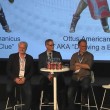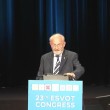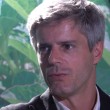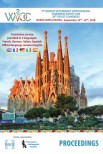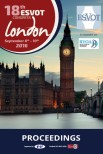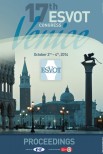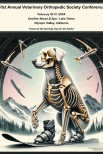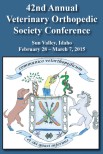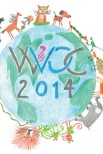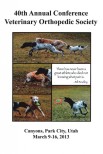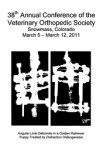Andy MacAlpine Torrington
Torrington Orthopaedics, Mission Street,
Brighouse, HD6 1NQ. UK
Qualifications. + Year of graduation: BVMS CertSAO MRCVS 1988
Employment prior to your current situation:
Small Animal Practices in the West Midlands,
Queen Mother’s Small Animal Hospital, Royal Veterinary College, London.
Animal Medical Centre- Manchester.
G.S-S. What or who influenced your decision to you to become a veterinarian?
My initial desire was to focus my career on Mathematics, however on mentioning this to my dad, he indicated a feeling that this did not “sound like a stable career option”. There is a strong tradition in the West of Scotland, where I grew up, to value professions over the more nebulous career paths. At about the same time as this conversation, a series of books written under the pseudonym James Herriot were being published and popularised in the UK. These were stories written by Alf White MRCVS about his days as a Mixed Practice Vet in the wilds of North Yorkshire. It may seem a little trite but actually these books with their wit and passion in the early days of the emerging “Small Animal” phase of Veterinary Medicine, certainly had a great influence on my decision to choose this as a career path.
G.S-S. Did you have a mentor or someone who played a role in you deciding to specialise in Orthopaedics?
I became interested in Orthopaedics whilst at Veterinary School and without any doubt, this was inspired by Professor Stuart Carmichael. His clarity of understanding combined with his clear teaching methods made me feel that Orthopaedics was a discipline with a logical foundation for decision making. This led me to purchase Brinker, Piermattei and Flo’s excellent textbook early on in my student days and this I suppose became my paper mentor for quite some time. G.S-S. In your orthopaedic career have you invented a system or technique that has been taken u by others?
I suppose the main things that I have created that have been adopted by a number of surgeons around the world is a couple of software applications, one for Mac computers (TTA Plan) and one for the iPad (iPlanTTA) which as their names suggest permit surgeons to confidently plan for TTA surgery using the application environment. Even surgeons who do not have digital radiography can engage in digital planning by simply taking a photograph of their patient radiograph. The applications walk the surgeon through the process and explains the optimal radiographic technique for getting the appropriate amount or advancement for their patient. It also has built in checks for safety that establishes whether it is likely that these results represent "safe data" or whether there is something that seems a little unusual. The desktop/MacBook version also permits the surgeon to audit their post operative radiographs to see if they managed to achieve the 90 degree relationship between the Straight Patellar Tendon and the Common Tangent. This allows surgeons to improve their understanding of the factors that influence the end advancement. Clearly cage position has an influence on the power of a cage to deliver the required advancement and the applications give the surgeon both cage size and optimal position. These applications were born from a desire to see TTA performed in such a way that it maximises patient benefit. Beyond this I have contributed to the "evolution" of techniques such as TTA, TTA-2, PAUL and Patella Groove Replacement by being an early adopter and then teaching these techniques at Kyon training courses.
G.S-S. What do you see as the future of Veterinary Orthopaedics? So many new system and technique are published every year.
There is, I feel, one largely ignored spectre that looms over all of the new techniques and methods that we are currently exploring and this is emerging antibiotic resistance. Techniques that fail to consider this threat will disappear if the situation continues to develop towards increasing antibiotic resistance. No matter how good a technique is, if we cannot control this risk, our safety:efficacy assessment will become dominated by it. I don't feel that Pharma will offer us much here and we should not depend on this as any impact here will likely be reserved for human surgeries. Part of this solution depends on increasing the simplicity of techniques. There is a secret tendency I feel to keep procedures complex and complicated in order to "ring fence" their use within the arena of the uber-specialist. Complexity, increasing Surgical Time and Complications are the unholy trinity of orthopaedics and this will become more pertinent in the face of increasing antibiotic resistance. It is great that Small Animal Orthopaedics has become such an active field. However I feel that we must set up a true Darwinian environment where procedures that show promise are able to flourish and those that don't, simply wither and die. The key selection pressures must be how well these procedures meet our patients' needs and how easily they can be applied to the greatest number of our patients. The pressure here in an ideal world would not be commercial pressure but one that is grounded in its power to deliver maximal benefit on a patient-by-patient basis and to the greatest number of the population experiencing this disease. Solutions need investment of time and money and the latter of those will require association with companies that naturally have a well developed eye on the bottom line of a financial spreadsheet. We need to work out how to develop a collegiate relationship with these companies and ideally between these companies in order to maximise benefit to our patients whilst not ignoring their financial imperative.
